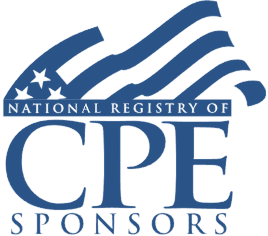Welcome! Save 30% on all CLE, CPE, and Professional Skills webinars, plus 15% off any annual pass with code HOLIDAY25
About the Course
Introduction
This webinar will explain first-party and third-party special needs trusts (SNTs) for tax practitioners working with these trusts or working with clients who may benefit from an SNT. Our panel of seasoned trust experts will discuss the unique tax reporting obligations and planning considerations for SNTs.
Description
An SNT could be the entity that best fulfills the primary purpose of a trust, one person holding assets for the benefit of another. At the same time, its fiduciary and reporting responsibilities are among the most complex.
SNTs can be third-party or first-party SNTs. The former's income can be taxed at the beneficiary or trust level; the latter is always taxable to the beneficiary, even when there are no distributions. Understanding when to distribute income can provide significant tax savings or needed cash flow for a trust and its beneficiary. Like trusts in general, distributions from SNTs are authorized by the trustee.
First-party trusts are irrevocable and are usually established for the benefit of someone receiving government benefits. A third-party trust can be revocable or irrevocable, and its tax liability paid by parents or other grantors. Tax practitioners working with these trusts or who have clients that could benefit from an SNT need to understand the reporting responsibilities and planning opportunities that come with these trusts.
Listen as our panel of trust and estate experts details how to distinguish first- and third-party trusts, Form 1041 filing options for first-party trusts, coordinating SNTs with ABLE accounts, and distribution considerations for trust and estate advisers recommending and filing returns for SNTs.
Presented By

Ms. McInerney's primary practice areas include Wills and Trusts, Special Needs Planning, Estate Administration, Trust Administration, Business Succession Planning/Formation, Guardianships (and alternatives), and Conservatorships. She is a graduate and member of Leadership Birmingham (2022) and Leadership Shelby County (20212). Ms. McInerney is a proud graduate of Partners in Policymaking Alabama “PIPA” (2021). She is also a member of the Birmingham Bar, Solo/Small Firm Section of the Alabama State Bar, and the Probate Section of the Birmingham Bar.
-
BARBRI is a NASBA CPE sponsor and this 110-minute webinar is accredited for 2.0 CPE credits.
-
BARBRI is an IRS-approved continuing education provider offering certified courses for Enrolled Agents (EA) and Tax Return Preparers (RTRP).
Date + Time
- event
Friday, November 14, 2025
- schedule
1:00 p.m. ET./10:00 a.m. PT
I. Special needs trusts: an overview
II. First-party SNTs
A. Reporting requirements
B. Distributions
III. Third-party SNTs
A. Reporting requirements
B. Distributions
IV. Coordinating with ABLE accounts
V. Best practices
The panel will review these and other key issues:
- Recognizing first- and third-party SNTs
- Key reporting differences between first- and third-party SNTs
- 1041 filing options for first-party SNTs
- Coordinating an ABLE account and an SNT
Learning Objectives
After completing this course, you will be able to:
- Identify key differences between first- and third-party SNTs
- Determine distribution differences between first- and third-party trusts
- Decide how first-party trust income is reported on Form 1041
- Ascertain specific clients who may benefit from an SNT
- Field of Study: Taxes
- Level of Knowledge: Intermediate
- Advance Preparation: None
- Teaching Method: Seminar/Lecture
- Delivery Method: Group-Internet (via computer)
- Attendance Monitoring Method: Attendance is monitored electronically via a participant's PIN and through a series of attendance verification prompts displayed throughout the program
- Prerequisite:
Three years+ business or public firm experience preparing complex tax forms and schedules, supervising other preparers or accountants. Specific knowledge and understanding of estate, gift and trust taxation including various trusts types, the unified credit, and portability.

BARBRI, Inc. is registered with the National Association of State Boards of Accountancy (NASBA) as a sponsor of continuing professional education on the National Registry of CPE Sponsors. State boards of Accountancy have final authority on the acceptance of individual courses for CPE Credits. Complaints regarding registered sponsons may be submitted to NASBA through its website: www.nasbaregistry.org.

BARBRI is an IRS-approved continuing education provider offering certified courses for Enrolled Agents (EA) and Tax Return Preparers (RTRP).

BARBRI CE webinars-powered by Barbri-are backed by our 100% unconditional money-back guarantee: If you are not satisfied with any of our products, simply let us know and get a full refund. Contact us at 1-800-926-7926 .
Unlimited access to premium CLE courses:
- Annual access
- Available live and on-demand
- Best for attorneys and legal professionals
Unlimited access to premium CPE courses.:
- Annual access
- Available live and on-demand
- Best for CPAs and tax professionals
Unlimited access to premium CLE, CPE, Professional Skills and Practice-Ready courses.:
- Annual access
- Available live and on-demand
- Best for legal, accounting, and tax professionals
Unlimited access to Professional Skills and Practice-Ready courses:
- Annual access
- Available on-demand
- Best for new attorneys
Related Courses

Partnership Terminations: Sale or Abandonment of an Interest, Retirement or Death of Partner, and Closing the Entity
Wednesday, February 18, 2026
1:00 p.m. ET./10:00 a.m. PT

UK-Based Retirement Accounts for U.S. Taxpayers: Mastering Reporting, Maximizing Planning Opportunities
Tuesday, January 27, 2026
1:00 p.m. ET./10:00 a.m. PT

Tax Research Techniques: Internet Tools, AI Caveats, Methodology, Documentation and Communication of Results
Wednesday, January 21, 2026
1:00 p.m. ET./10:00 a.m. PT

The Impact of OBBBA on Trusts and Estates: New Planning Opportunities
Monday, January 26, 2026
1:00 p.m. ET./10:00 a.m. PT
Recommended Resources

How CPE Can Bridge the Gap Between What You Know and What You Need to Know
- Career Advancement


